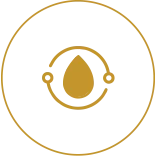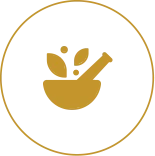Right from diagnosing your predisposition to a particular illness to giving you a guideline for living (what to eat, when to do it, when to exercise, when to rest among things) every day and for every season, Ayurveda offers the full range of solution to deal with the modern world’s healthcare mess largely led by lifestyle diseases. The most useful aspect of a system like Ayurveda is its ability to check an individual’s predisposition to certain type of ailments, through Nadi Pariksha or pulse diagnosis. Here are few ways this is done.
1. What does it evaluate?
Pulse diagnosis is an ancient science of reading an individual’s state of body, mind and spirit. It is a total diagnosis of an individual’s Doshic constitution.
2. Introduction to Nadi
The most crucial tool in the hands of an Ayurveda expert to diagnose your health holistically including your tendencies and predispositions is your Nadi. Nadi or pulse is the vital life force that courses through your entire body and subtle energy channels, studied by the Ayurvedic expert or Vaidya. The expert examines the flow of this life force at specific locations in the body to tell you about possible imbalances in your body.
3. When is the pulse diagnosis done?
As a rule, pulse diagnosis is done on an empty stomach. It should not be done immediately after a bath or an oil massage or when patient is too hungry or too thirsty.
4. How can it be learned?
It is a body of knowledge passed down the generations in the Gurukul or teacher-student tradition. That is the reason this ancient system of preliminary examination is not widely known yet.
5. Understanding the pulse
Strengthening the western method of recording the rate of pulse, pulse Ayurvedic method of pulse diagnosis involves touching, feeling, observing and experiencing not just the pulse rate, rhythm and volume but also the flow, amplitude, force and consistency. The beauty of this is Nadi Pariksha is based on the principle that the symptoms of disease manifest in the pulse long before they do in the body.
For example, when a chemical imbalance occurs in the blood it produces an aggregate effect much earlier detectable in blood than symptoms in the body. The characteristics and the movement of the pulse are symptoms of the functioning of the body.
6. Workings of pulse diagnosis
Pulse diagnosis includes three tools– darshana or observation, sparshana or touch and prashna or inquiry.
Ayurveda is a science that aims at the unity of mind, body, spirit, i.e, mental, emotional, physical aspects of physiology. Learning something about one facet gives a glimpse of all the other three aspects. Our pulse yields this insight about the total person.
On a basic level of pulse diagnosis, the expert can tell you about the current state of one’s physical and mental being of the patient on pulse diagnosis. For example, if a particular emotion is strong, or if digestion is weak or if liver function is poor etc.
A step above this basic assessment, is a far deeper assessment of the past stress and information from birth of a person’s unique constitution or Prakruti that makes each person unique on this planet.
Constitutional (prakruti) assessment is extremely important because this information gives understanding which diet, activities, herbs, emotions, etc. can have either a favorable or negative effect upon a given individual. It helps predict what kind of imbalances or diseases that person is most susceptible to. It also gives clues about whether or not one expresses the natural attributes of one’s own prakruti.
Further, it describes the innate balance of the doshic principles within an individual. Just as knowing something about one point in time promotes knowledge of all points in time–past, present, future, assessing an individual’s mental constitution yields a picture of the way one is likely to think and act spontaneously when in balanced physiology or good health.
7. Know Doshic imbalances in the body
Another reason for having a pulse assessment is to find out etiology -the cause-imbalance of one or more of the three interacting principles–vata, pitta, kapha. Assessing the doshic imbalance can enable the doctor to go to the root of a disease and suggest remedies rather than just treat symptoms. There are many predisposing factors such as genes, congenital factors, trauma, but what brings about the manifestation is a dosha imbalance.
An expert can feel which organs, systems, or tissues are working under stress and which dosha imbalance is causing the problem. Once one knows which organs and tissues are involved then the pathogenesis (origin, path, and extent of imbalance or disease) is clear.
8. The advantage over the western medicine
Ayurveda recognizes six stages of pathogenesis-the first four of which are not found in the modern allopathic methodology. Ayurveda identifies imbalance or disease before it manifests with signs and symptoms. Remedial interventions at these stages are easier, less costly, and quicker to produce results.
9. Where can you get it done?
What if we reveal a hideout! A quiet and heavenly place for you, where you can have your pulse diagnosis done by most competent and seasoned Ayurvedic experts is the Art of Living Retreat Center, nestled at the top of lush Blue Ridge mountains in Boone, North Carolina that also offer the finest Ayurvedic spa and massage treatments, based on your pulse assessment for restoring your Doshic imbalance.
The center has all the ingredients-spa retreats, Panchakarma, finger licking delicious fare, Yoga and Ayurvedic Dosha balancing treatments with the idyllic views of the hills-that go into making a perfectly relaxed and rejuvenating vacation with quality soul-time.










